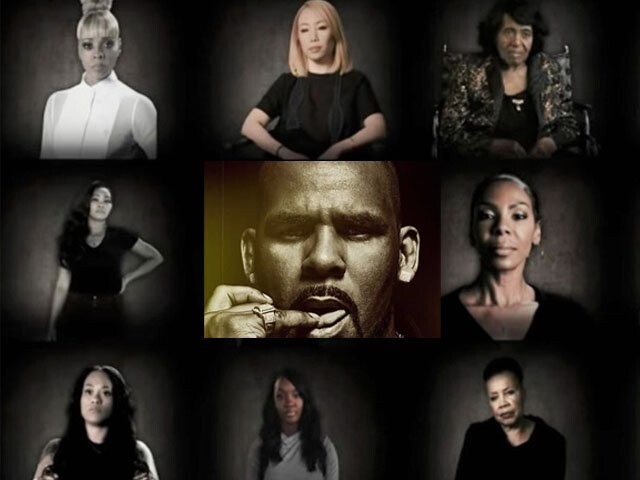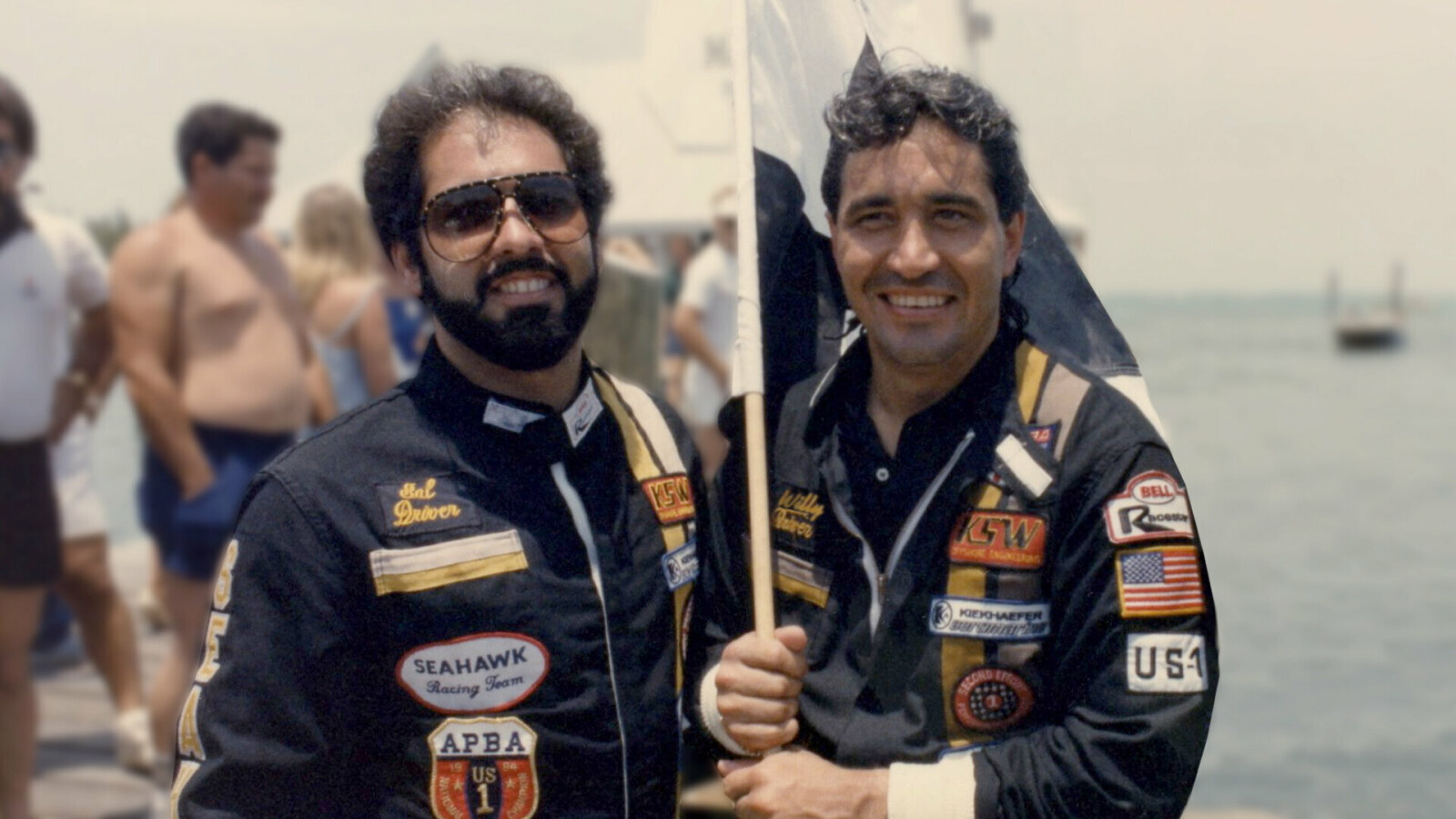15 Behind-The-Scenes Stories From True Crime Shows And Podcasts

True crime shows can’t possibly show us everything there is to know about a case, which in a way is kind of frustrating since knowing all the facts is fairly crucial when deciding just how big a piece of absolute ass someone is. Also, filming these macabre stories about murder and maybe fraud, but mostly just murder, can get pretty funky sometimes — especially when you’re, say, talking to a cult leader who’s meticulously explaining to you how they ended up poisoning a person. People are strange, and true-crime documentaries can be even stranger.
Snapped: The Show Cast Real Detectives To Be Their Stand-In Crime Scene Actors

Oxygen
The Oxygen original series that premiered back in 2004 — and largely focuses on women who kill — have captured more than 15 thousand hours of footage over the years. “If you woke up tomorrow and did nothing for 24 hours a day, seven days a week but watch raw footage of Snapped, it would take you just under two years to watch it all,” said Todd Moss, the show’s executive producer.
To help make the show authentic and as accurate as possible, off-duty detectives are often cast as actors for the crime scene reenactments. This way, they can get the input of actual detectives on set.
Making A Murderer: The Juror Who Reached Out To The Filmmakers Because They Believed Avery Was Framed

Netflix
Filmmakers Laura Ricciardi and Moira Demos revealed that a juror from Steven Avery’s 2005 murder trial contacted them when the popular Netflix show hit because they believed Avery was framed by law enforcement. Ricciardi explained: "(The juror) told us that they believe Steven Avery was not proven guilty. They believe Steven was framed by law enforcement and that he deserves a new trial, and if he receives a new trial, in their opinion it should take place far away from Wisconsin."
The juror also told the two filmmakers that there was behind-the-scenes vote-trading going on during the trial and that jurors were allegedly pressured to vote certain ways.
The Confession Tapes: Sometimes A Show Can’t Show Us Everything

Netflix
For instance, in the “Eighth and H” episode about gangs and a murder in Washington D.C., the show couldn’t feature all the defendants and witnesses. One witness that didn’t make the cut but that the filmmaker said will definitely influence people’s perspective of the story is Maurice Thomas, a 14-year-old who was apparently paid to be a witness. Maurice, however, was bullied by the accused (who called him “faggy Maurice”), and as Kelly Loudenberg (the creator of the show) said: “Knowing this would have helped viewers understand why Maurice would pin a crime he never even saw on a few guys that picked on him.”
Serial: When Maxim Spoiled The Premise Of The Podcast’s Second Season

Serial Podcast
It’s one of the biggest and most successful true crime podcasts to date, and since its debut in 2014, the show has acquired a strong following — even among the media, who hammered them about their future subject prior to the second season’s release. According to the creators, news outlets were constantly speculating what the show would be covering next, only for Maxim (of all magazines) to break the story that season two would be about the case of Sgt. Bowe Bergdahl.
The filmmakers were very unhappy about it, and the line producer emailed the reporter of the article, saying: “We'd very much appreciate if fellow journalists would give us some room and not feel the need to attempt to dig into and try to figure out what you think we might be doing, especially since we're actively reporting stories, and having a bunch of wild speculation out there makes our job reporting harder. Doesn't feel very menschy.”
The Jinx: The Actors Who Did The Reenactments Had No Idea What They Were Doing

According to Chelsea Gonzalez (who played Kathie Durst in the reenactments), all the scenes with the stand-in actors were shot intermittently over the course of two years. And the direction was very “in the moment.” As in, they didn’t know what they were doing beforehand, and director Andrew Jarecki would tell them what to do as they went.
Said Gonzales: “There was one scene where they wanted me to drive up . They got this old car that Kathie Durst once drove, so they had that, and they spent so long setting up this one shot. They had me waiting at the bottom of the driveway in the car, and then they just had a walkie-talkie in the car with me, and they said, ‘Okay, when we tell you, we want you to drive all the way up the driveway, pull over in front of the house, get out of the car, throw your cigarette down on the ground, and go into the house.’ When they called action and I went, I didn’t realize they had set up this huge fog machine, and I couldn’t see where I was driving at all, and I crashed into a huge rock.”
Tiger King: All Joe Exotic’s Zoo Employees Signed NDA’s

Netflix
According to investigative reporter Robert Moor, people who wanted to work at Joe Exotic’s Zoo had to sign a non-disclosure agreement first. Moor said that this explains why no one at Exotic’s zoo ever came forward or spoke out against the ongoings on the plot.
Of course, it turned out that those million-dollar NDAs weren't even legally valid.
Don’t F**k With Cats: One OF The Filmmakers Received A Message From The Killer

Netflix
Don’t F**k with Cats: Hunting an Internet Killer is a Netflix true-crime doc that follows a group of internet sleuths attempting to find Luka Magnotta, the Montreal killer who also tortured and killed several cats — and put all the footage of his crimes online.
Deanna Thompson, one of the people involved in tracking down the horrid human, later revealed that Magnotta messaged her with a Nietzsche quote that got under her skin. “The quote was, ‘Whoever fights monsters should see to it that in the process he does not become a monster. And if you gaze long enough into an abyss, the abyss will gaze back into you.’ Meaning that, ‘Hey, be careful that you don’t get so involved that you become me.’”
Keep Sweet: Pray and Obey: Filming The FLDS Was A Trip

Netflix
The new Netflix show follows the many crimes and misdeeds of the polygamous Fundamentalist Church of Jesus Christ of Latter-Day Saints, a (radical) offshoot of mainstream Mormonism with its leader, Warren Jeffs, marrying as many as 78 women — many of them grossly underaged. The filmmakers got to see some of these FLDS homes where countless wives and kids had to live together in what felt like a hotel with “endless rooms.”
The Tinder Swindler: Simon Leviev Moved On, Fast

Netflix
The documentary had just dropped, and its subject matter Simon Leviev was already signing with a Hollywood talent manager of the D-list variety. Nonetheless, it seems he might be going on dating shows and the likes, so good luck to any reality TV contestant who has to deal with that.
The Staircase: Meticulously Replicated The OG House And Crime Scene

HBO Max
The HBO Max adaptation — of the original French true-crime documentary of the actual death of Kathleen Peterson, allegedly at the hands of her husband Michael Peterson — made sure to replicate the three important staircases in the show. When production for the show started, Peterson’s actual home happened to be up for sale, which was a great convenience for the production team.
Showrunner Maggie Cohn said: “We were able to get into the house with our location manager and part of our art department and measure it exactly. These three staircases were the only things that were identical to the ones in the house. I cannot tell you how difficult it was to make them identical, because when you are striving to replicate something explicitly and literally, it is nearly impossible.”
Unsolved Mysteries: The True Crime Show That Once Blew Up A Church

Netflix
The show’s episode, “Lucky Choir,” told the story of how the members of a church choir were (luckily) late for choir practice on the evening their church blew up. The producers of the show found a church that was scheduled for demolition in Nebraska, positioned five cameras around it, and blew it up with 75 sticks of dynamite and three 10-gallon tubs of gasoline.
Surviving R. Kelly: The First Editing Team Resigned

Netflix
The nearly all-Black post-production team of the show originally protested and walked out due to disagreement over how the survivors featured in the show should be handled and empowered. The stuff we saw in the documentary was what these editors initially wanted (even though they weren’t credited for their cuts, and apparently had to sign NDAs), but back then, their grievances apparently hit a wall, and they ended up quitting en masse.
Wild Wild Country: The Filmmakers Had Some Unsettling Moments Filming The Cult

Netflix
Co-creator Chapman Way admitted there were many moments where he and his brother just looked at each other in fascination and horror.
“(When the line ‘They poured the blended beavers into the water supply’ was said) That was definitely one of those moments where I kind of slowly turned my head right after he said it and Mac and I made eye contact without even saying anything. Like, ‘What the f**k did he just say?’ I think the other really fascinating interview moment was when Jane walked us through, in a very clear-headed manner, her murder attempt of Bhagwan's doctor. I think there's something really bone-chilling about that moment, because this is just a woman that just seems so far from being capable of doing something like that, and to hear her justification of wanting to protect the guru and save the master.”
Cocaine Cowboys: The Show Got Going After A Creator’s Cousin Randomly Met A Member Of A Big Drug Cartel At A Miami Pool

Netflix
Creators Corben and Spellman initially had zero connections in Miami’s drug world. Luckily, Miami’s not that big a place, and Corben’s cousin ended up meeting Jon Roberts at a local pool. Cuz phoned Corben about the guy … who turned out to be connected to the Medellin Cartel — the infamous cartel founded by Pablo Escobar.
The Devil Next Door: Netflix Had To Amend The Show After Complaints From The Polish Prime Minister

Netflix
The 2019 Netflix true-crime documentary focused on the trial of John Demjanjuk, the man accused of being the Ukrainian concentration camp guard known as “Ivan the Terrible.”
Polish premier Mateusz Morawiecki wrote a letter to the CEO of Netflix, complaining about the inaccuracies of the show’s maps. See, these maps showed that Nazi concentration camps like Auschwitz stretched across and into the borders of Poland.
Netflix agreed to only add an on-screen text below these maps stating that the death camps were located in territories occupied by the Nazis.
Thumbnail: Netflix